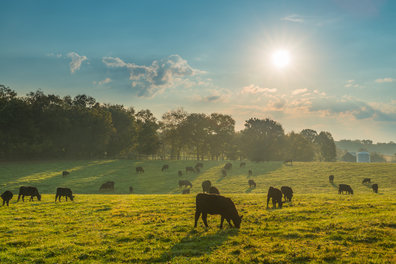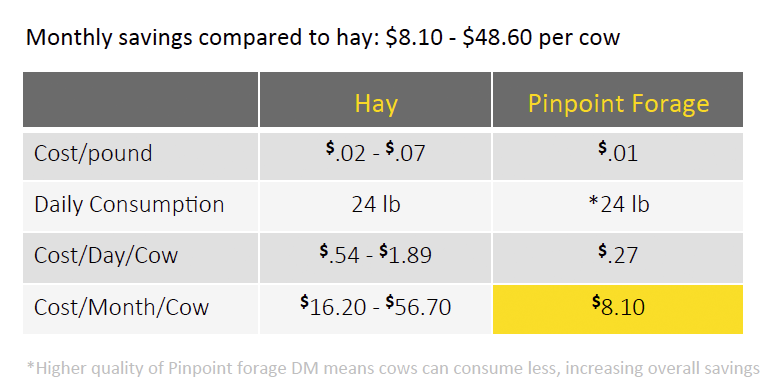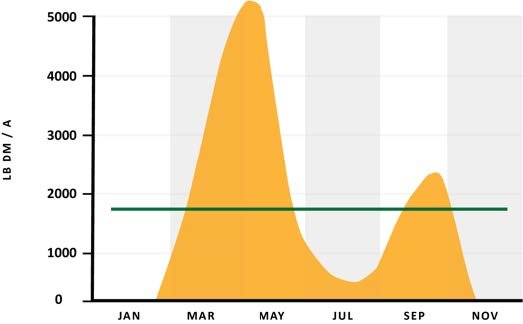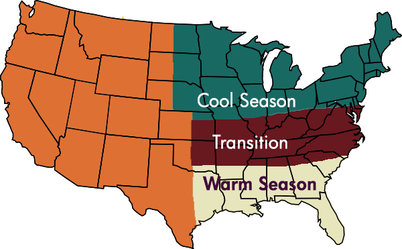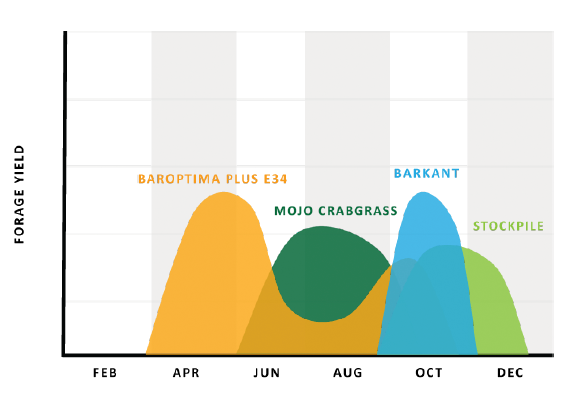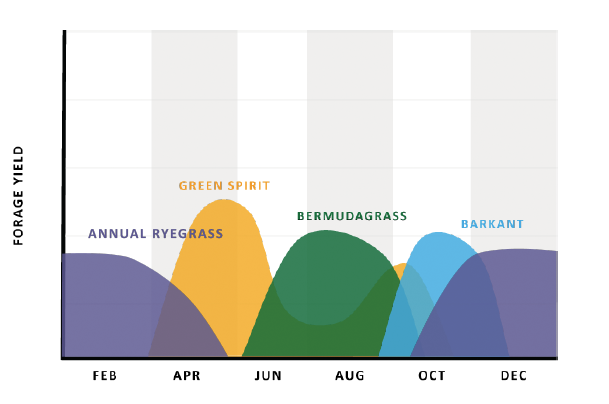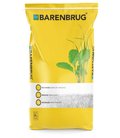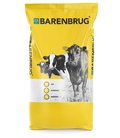Feed grazed directly by animals will typically always be less expensive than conserved forage (hay, silage, baleage that is harvested and fed later). In addition, grazing animals recycle nutrients onto the pasture instead of concentrating them in areas where conserved forages are fed. Pinpoint products, along with other management changes, will allow growers to reduce their hay-feeding season regardless of where they’re located.
Pinpoint products, as part of an improved management plan, can help you optimize the utilization of grazed forages and reduce dependency on supplemental feed, fuel, and other inputs.
Clovers should be part of every improved pasture management plan. The biological nitrogen fixation they support reduces fertilizer cost, increases the crude protein content and improves feed quality. There are a number of species available to fit specific needs.



